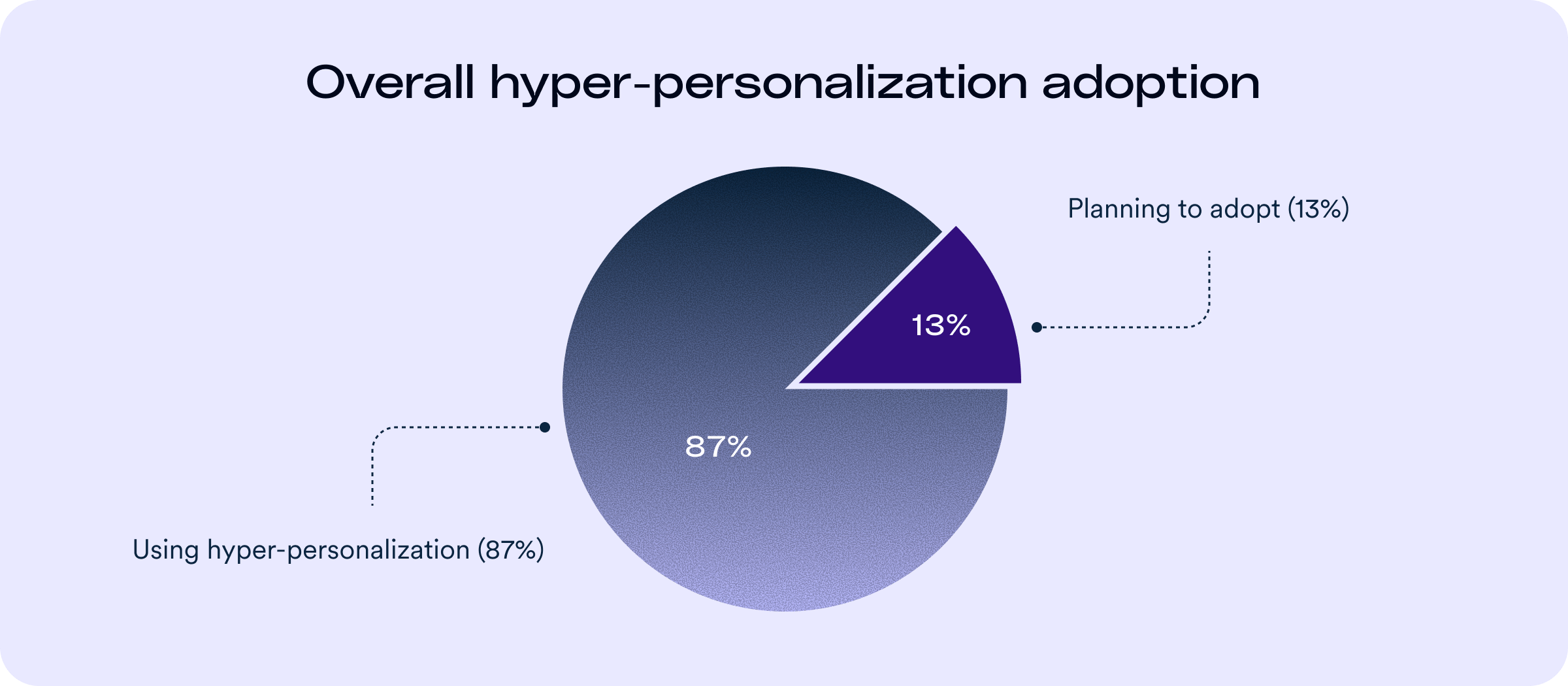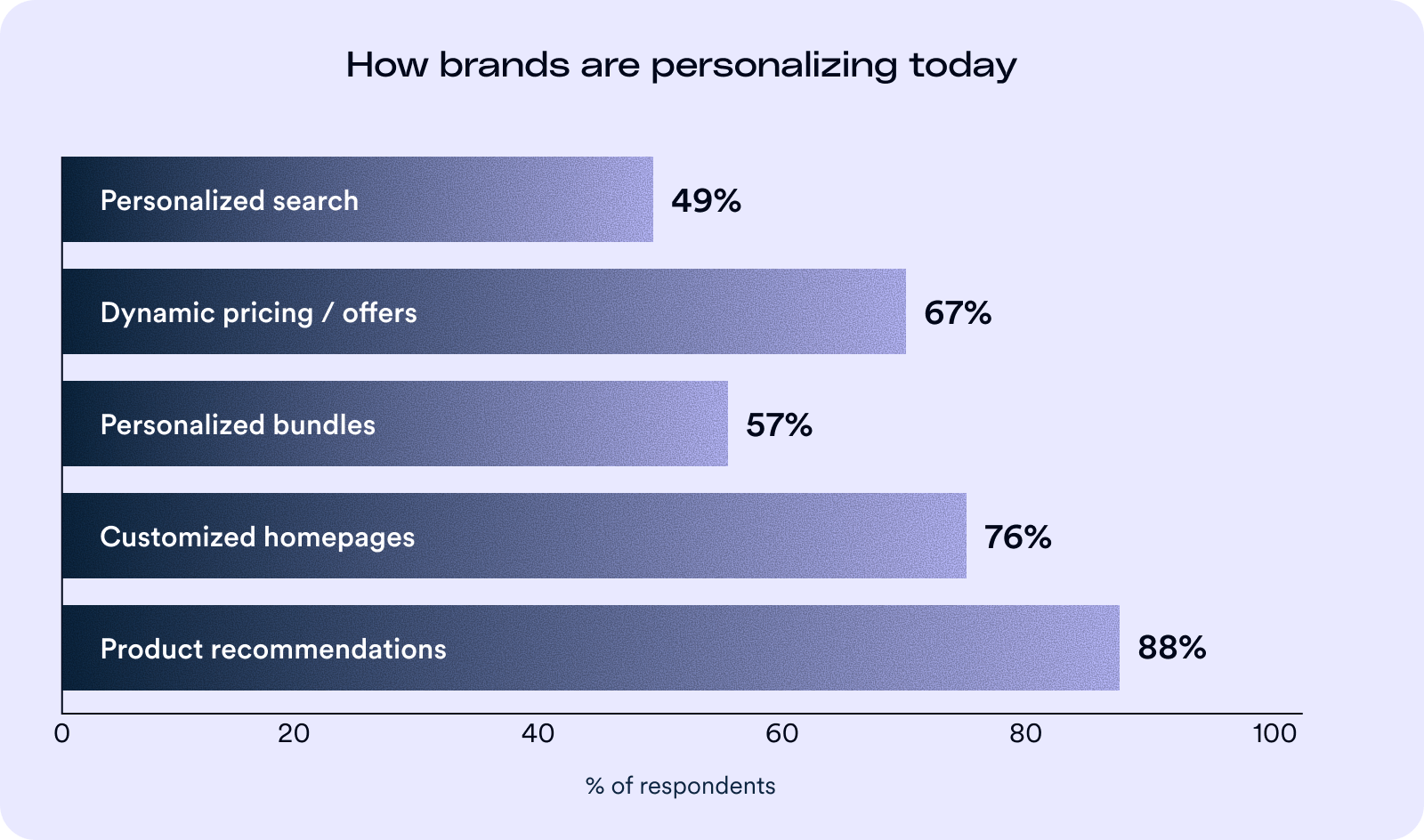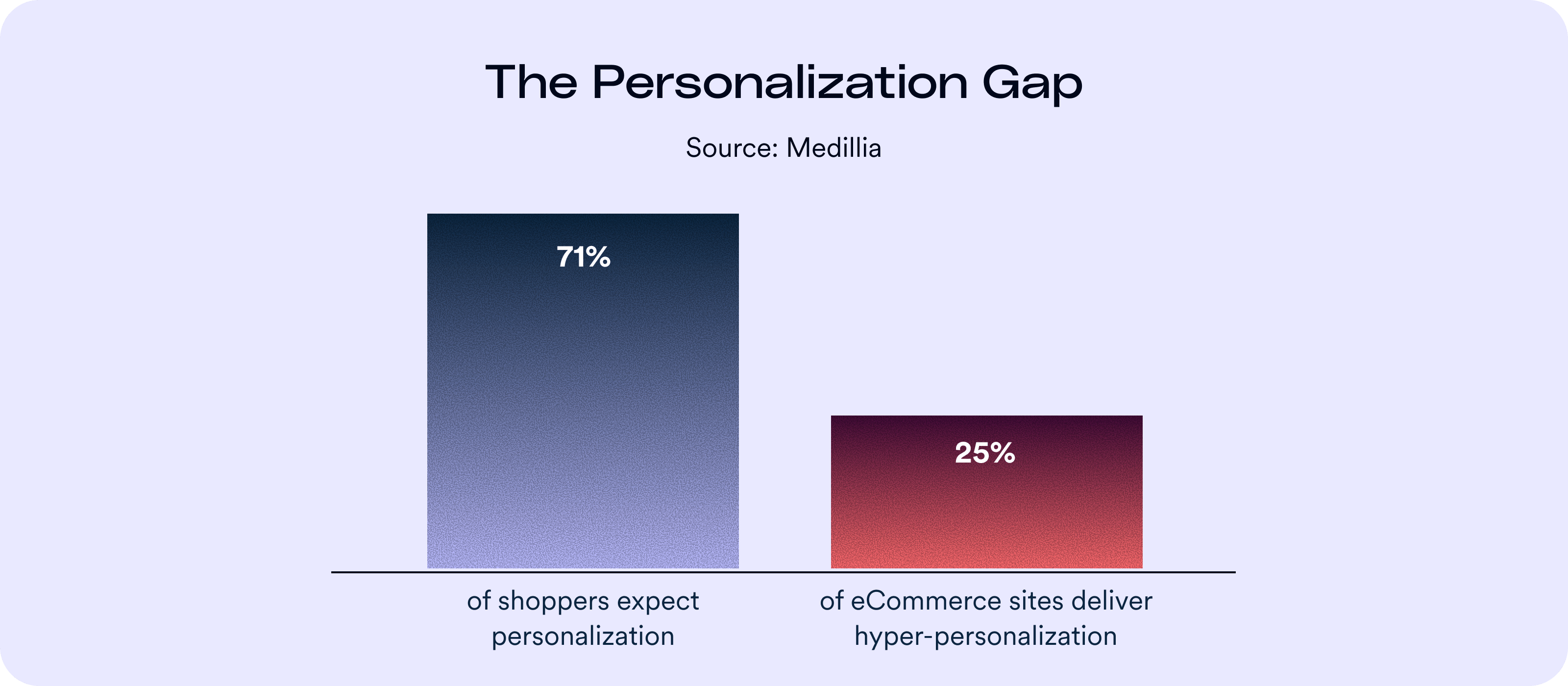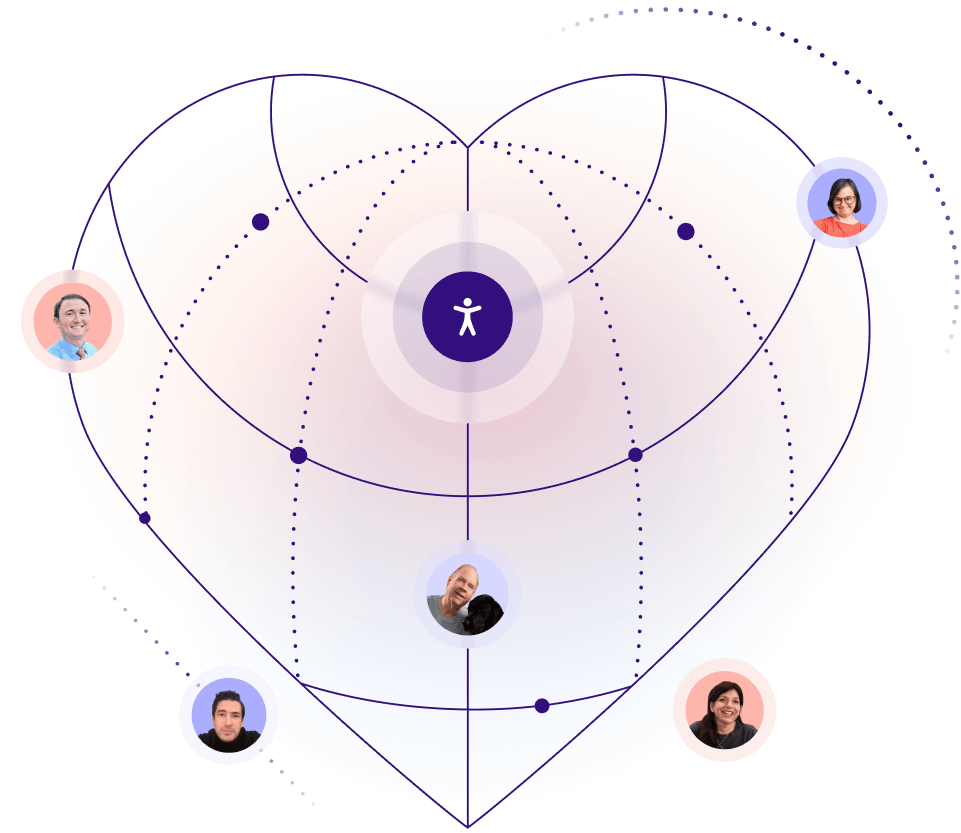About the research
Our eCommerce trends survey, conducted with Qualtrics, non-profit leaders, and disability community organizations, captured insights from over 300 eCommerce leaders and members of the disability community. The findings show that while most online retailers are investing in AI-driven personalization, many overlook accessibility as part of that strategy, revealing why inclusive design is essential to make personalization truly personal.
True personalization is accessible personalization
Retail is shifting from static, one-size-fits-all websites to real-time, AI-powered shopping experiences that adapt in the moment. This is hyper-personalization: behavioral data, artificial intelligence, and dynamic content converging to create unique journeys for every shopper.
From location-based recommendations to dynamically generated bundles, personalization is now baseline. Customers expect not only relevance, but seamless adaptation to their preferences, context, and intent. The payoff is clear: stronger loyalty, deeper engagement, faster revenue growth.
But most personalization stops short. Brands tailor what shoppers see, yet ignore how they access it. Accessibility is personalization; examples include but are not limited to:
- For those who rely on keyboard navigation, navigable menus are personalized UX
- For a shopper with ADHD, reduced motion or simplified content improves engagement
- For someone with low vision, high-contrast text is not optional—it’s essential
- For screen reader users, accurate labeling of checkout form fields can make the difference between a purchase and and an abandoned cart
And in eCommerce, the stakes are higher. Dynamic content, constant updates, and high-value flows like checkout magnify the cost of exclusion. A hyper-personalized site that isn’t accessible isn’t truly personal—it’s exclusion.
Accessibility is the future of hyper-personalization. If you’re not designing for it, you’re not really personalizing |
From fun feature to business baseline
Personalization has moved from novelty to necessity. Leaders like Amazon and Walmart have reset expectations. McKinsey reports that top-performing companies already drive 40%+ of revenue from personalization.
Our survey of over 300 eCommerce leaders confirms that hyper-personalization is now table stakes among mid-market brands: 87% of retailers already use it, and 13% plan to adopt it in the future.

When it comes to methods, the classics dominate: 88% rely on product recommendations, 76% customize homepages or landing pages, and 57% offer dynamic product bundles. These tactics mirror strategies from leaders like Amazon, where “customers who bought A also bought B” recommendations now drive over a third of site revenue.

And consumer demand is clear:
- 71% of shoppers expect personalized experiences
- 76% feel frustrated when they don’t get them
- 90% of brands report higher ROI from personalization
Despite the hype, most brands are still far behind consumer expectations. While 71% of shoppers demand personalized experiences, only 25% of eCommerce journeys deliver them—a gap that represents billions in untapped revenue.

The business impact of personalization is undeniable: personalization fuels growth, cuts costs, and strengthens market position.
- 61% of consumers will spend more with brands that personalize well
- Personalization can reduce customer acquisition cost by up to 50%

The missing layer of personalization
Hyper-personalization and accessibility share the same foundation: structured, inclusive experiences. If product recommendations, layouts, or dynamic bundles aren’t built accessibly, two things happen: shoppers with disabilities can’t use them, and personalization engines fail to deliver their value.
According to our research, 20% of eCommerce leaders admit they are not sure how to personalize effectively for shoppers with disabilities. Without accessible design, even the most advanced AI-driven experiences fail to be truly personal.
When accessibility is built in, brands unlock dual benefits: personalization that works for everyone and performance that scales.
Benefits of accessible personalization
- Usability is personalization: Semantic HTML, alt text, and labeled inputs ensure personalized content can be accessed by all shoppers
- Engagement improves: Reduced motion, high-contrast between text and background colors, and keyboard-friendly flows let neurodiverse and low-vision shoppers act on tailored offers
- User-driven experiences: Session-based design controls, like those in accessWidget, give users the ability to adjust text size, contrast, and navigation—hyper-personalization at its most authentic
Accessibility is the missing layer that makes personalization truly personal |
Risks of inaccessible personalization
- Invisible offers: AI-generated layouts without semantic markup reduces screen reader comprehension and usability
- Broken journeys: Inaccessible carousels, popups, and other dynamic updates can be barriers for users with motor or cognitive disabilities
- Lost trust: Brands that ignore accessibility are at a higher risk of lawsuits, exclusion, and reputational damage
Accessibility makes personalization complete. By combining AI-driven insights with inclusive design, brands can personalize for everyone, turning personalization from a conversion booster into a long-term loyalty engine.
"I am always appreciative of retailers that think and act on inclusive practices in their UX/UI. With more online shopping happening, this is how we bring personalization to the internet that used to be available in-store" - SELF: Special Education Leader Fellowship |
How eCommerce brands can lead with inclusive personalization
- Build accessibility into your personalization strategy
Personalization isn’t complete if some customers are left out. Adding semantic HTML, alt text, and labeled inputs ensures tailored content is usable by everyone, not just most. - Test the journeys customers actually take
Personalized flows change constantly. Auditing not just the “default” path but also dynamic recommendations and offers helps identify barriers before they frustrate shoppers. This is especially critical given that 31% of eCommerce leaders see returning and VIP customers as the groups most at risk when personalization misses the mark. User testing is invaluable to ensure that even your most loyal shoppers aren’t excluded. - Expand what you mean by personalization
It’s not only about products and promotions; it’s also about how people engage with your site. Features like reduced motion, high-contrast text, and keyboard navigation give neurodiverse and low-vision shoppers a true sense of personalization. - Plan ahead for inclusion
Accessibility is easier and more cost-effective when it’s considered early. Building it into personalization budgets and CX planning prevents expensive retrofits and strengthens compliance. And the need is clear: 21% of businesses recognize a gap in personalization for people with disabilities—one that can be solved by planning ahead. Tools like accessFlow can help, even if your dev team doesn’t have accessibility expertise. - Use AI responsibly
AI can generate recommendations, layouts, and copy at scale but only if it follows accessibility standards. Establish accessibility-aware prompts and test AI-driven experiences with assistive technologies. - Measure accessibility like you measure ROI
If personalization success is tracked through revenue and engagement, accessibility success should be tracked through usability and inclusivity. Adding accessibility metrics ensures every customer is counted in your performance results.
Personalization isn’t personal without accessibility
Hyper-personalization has already become the baseline in eCommerce, but without accessibility it falls short of being truly personal. By building inclusive design into AI-driven experiences, retailers can ensure personalization adapts not just to preferences, but to how every shopper accesses content. The result is loyalty, trust, and growth powered by experiences that work for everyone.


